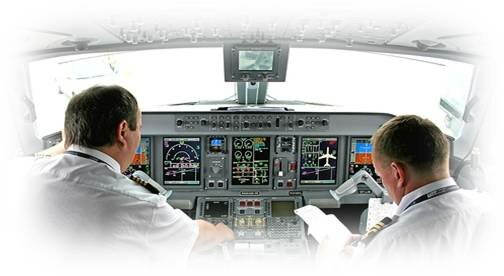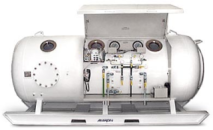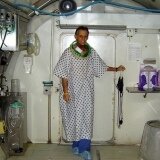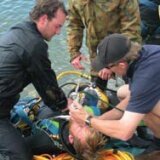What is Hypoxic Hypoxia?

Hypoxic hypoxia is a result of a defective mechanism of oxygenation in the lungs, as caused by a low tension of oxygen, abnormal pulmonary function, airway obstruction, or a right-to-left shunt in the heart.
Some acute and chronic conditions associated with inadequate oxygen supply to lungs or inadequate alveolar oxygen exchange decrease oxygen saturation levels in blood thus causing hypoxic hypoxia.
Among such diseases are Chronic Obstructive Pulmonary Disease (COPD), asthma (or other allergic reactions), sleep apnea, pulmonary shunts, constricted airways or other poor pulmonary ventilation conditions.
Symptoms of hypoxic hypoxia can also occur when not enough oxygen is in the air or when decreasing atmospheric pressures prevents the diffusion of O2 from the lungs to the bloodstream.
Aviation personnel are most likely to encounter hypoxic hypoxia at high altitudes. It is due to the reduction of the PO2 (partial pressure of air) at high altitudes.

Photo courtesy of "Roomman"
Hypoxic hypoxia symptoms can become obvious when the PAO2 (partial pressure of air) goes under 65-60 mmHg, which occurs at 10,000 ft of altitude. Because of this, there is a general rule requiring the use of supplemental oxygen when flying at a cabin altitude exceeding 10,000 ft.
Have you noticed that when you fly a long flight, your feet swell? The reason is that for your nine hour flight you are breathing 17.6% O2 when the aircraft is at cruising altitude of 38,000 feet. This means that there is a hypoxic hypoxia affecting all body cells.
The most evident effect is that endothelial cells hold a lot of nitric oxide. When hypoxia sets in, the endothelial cells, particularly those on the venous side of the circulatory system suck in a lot of water from plasma and interstitial fluid.
Keep in mind here that not only is there hypoxia during flight, there is a decompression sickness problem as well. The body contains approximately 3% body-weight of Nitrogen (N) in chemical form at sea level. A rough calculation is a 200 lb. (90 Kg.) man will have 6 lbs (2.7 liters). of N inside him as a liquid.
During flight, Dalton's Law kicks in and the N disassociates. Without getting too technical and not knowing the speed of the off gassing of the N, it is likely that the patient bleeds off near on a liter of N. There is no compensatory effect of breathing 100% oxygen as there is in a HBOT chamber during the flight.
According to a very clever American HBOT specialist, Keith Van Meter, M.D., all jet lag after a long flight is enhanced by the passenger/patient's of sub-clinical DCS. (That is why a ride in a chamber after a long flight will "set your clock right.") According to Van Meter, a ride in a chamber after landing should be mandatory for all flight crews.
People traveling at high altitudes above 10,000 feet or working at high altitudes where amount of oxygen is reduced due to reduction in partial pressure of air, inhale less oxygen than needed to satisfy metabolic requirements of their body cells.
Many otherwise healthy individuals experience acute mountain sickness within a day or two after ascent to altitudes above 8,000 feet, particularly if they arrived by air from sea leve1. Symptoms include headache, lethargy, insomnia, anorexia, and in some cases nausea and vomiting. Believed to be due to mild cerebral edema, acute mountain sickness typically resolves over several days even if the individual remains at altitude.260
High altitude cerebral edema and high altitude pulmonary edema are more serious, sometimes fatal maladaptations of previously healthy individuals who ascend rapidly above lO,OOO-12,000 feet, which typically occur several days after arriva1. Chronic mountain sickness, occurs in some individuals after months or years of residence at high altitude.260
Symptoms Of Hypoxic Hypoxia
Symptoms of hypoxic hypoxia experienced vary widely from individual to individual, even when exposed to identical environmental conditions. When altitude hypoxia (the type of hypoxia most commonly encountered in aviation) develops, there are four stages associated with different signs and symptoms:
- Indifferent Stage. Mild hypoxia in this stage causes night vision to deteriorate at about 4,000 feet. Individuals who fly above 4,000 feet at night should be aware that visual acuity decreases significantly in this stage because of both the dark conditions and the developing mild hypoxia.
- Compensatory Stage. The circulatory system and, to a lesser degree, the respiratory system provide some defense against hypoxia at this stage. The pulse rate, systolic blood pressure, circulation rate, and cardiac output increase. Respiration increases in depth and sometimes in rate. At 12,000 to 15,000 feet, however, the effects of hypoxia on the nervous system become increasingly apparent. After 10 to 15 minutes, impaired efficiency is obvious. Individuals may become drowsy and make frequent errors in judgment. They may also find it difficult to do even simple tasks requiring alertness or moderate muscular coordination. Pilots preoccupied with duties can easily overlook hypoxia at this stage.
-
Disturbance Stage. In this stage, the physiological responses can no longer compensate for the oxygen deficiency. Occasionally, pilots or crew members become unconscious from hypoxia without undergoing the subjective symptoms. Fatigue, sleepiness, dizziness, headache, breathlessness, and euphoria are the symptoms most often reported. The objective symptoms explained below are also experienced:
- Mental Processes. Intellectual impairment is an early sign that often prevents the individual from recognizing disabilities. Thinking is slow, and calculations are unreliable. Short term memory is poor, and judgment as well as reaction time is affected.
- Psychomotor Functions. Muscular coordination is decreased, and delicate or fine muscular movements may be impossible. Stammering and illegible handwriting are typical of hypoxic impairment.
- Senses. Peripheral vision and central vision are impaired, and visual acuity is diminished. Weakness and loss of muscular coordination are experienced. The sensations of touch and pain are diminished or lost. Hearing is one of the last senses to be lost.
- Personality Changes. There may be a display of basic personality traits and emotions much the same as with alcoholic intoxication. Euphoria, aggressiveness, overconfidence, or depression can occur.
- Psychomotor Functions. Muscular coordination is decreased, and delicate or fine muscular movements may be impossible. Stammering and illegible handwriting are typical of hypoxic impairment.
- Cyanosis. When cyanosis occurs, the skin becomes bluish in color. This effect is caused by oxygen molecules failing to attach to hemoglobin molecules.
- Critical Stage. Within three to five minutes, judgment and coordination usually deteriorate. Subsequently, mental confusion, dizziness, incapacitation, and unconsciousness and eventual death can occur.
Hyperbaric oxygen (HBO2) significantly increases the oxygen diffusion driving force, thus increasing oxygen availability to tissues. This helps to correct negative effects of hypoxic hypoxia and restore normal tissue oxygenation.
Read more about Tissue Hypoxia, Histotoxic Hypoxia, Cerebral Hypoxia, Chronic Hypoxia, Altitude Sickness.
Return to the Hypoxia overview












